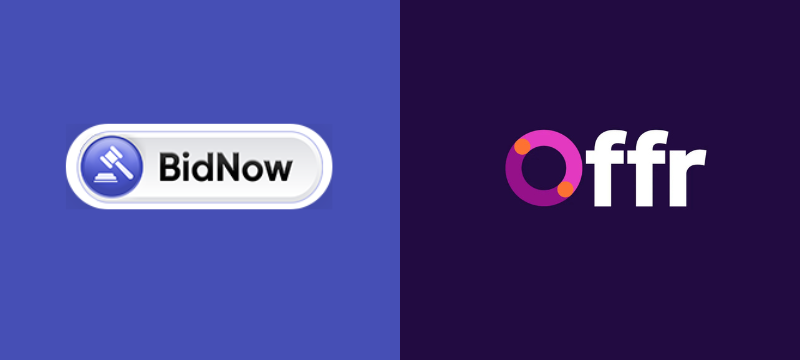Real Estate App Design- Key Practices That Every Realtor in Dubai Must Know

- By BidHom Team
-
 Published on October 4, 2024
Published on October 4, 2024
 6 minutes read
6 minutes read
As we can see, real estate apps have grown tremendously over the years, making it easy for home buyers and sellers to access a wide range of properties, brokers, and tracking tools. These users now expect a great real estate app design with seamless navigation, exceptional user interface, and clear information hierarchy.
To create a successful real estate app for Dubai’s competitive real estate market, you must be aware of the latest design techniques and best practices. This will ensure enhanced usability and lead to long-term business success. In this blog, we will learn how a reliable real estate app development company in Dubai like BidHom can create an award-winning real estate app aligned with the best design practices for a seamless user journey map.
Best Practices for Real Estate App Design
With the increasing demand for digitized real estate solutions, homebuyers are relying on real estate apps to find suitable properties. Following the top real estate app design practices is crucial if you want to deliver an intuitive user experience. To help you give some ideas, we have shortlisted some of the best design practices that must be kept in mind while designing your real estate app with the help of the top real estate website builder.
– Focus on a Clear Information Hierarchy
One of the basic things that many real estate app owners often ignore is keeping focus on a clear information hierarchy and structuring content logically. Ensure that you place all the essential features like sign-up/ login, property listings, search functionality, and more throughout the design hierarchy.
Also, make use of visual cues such as size, color, and typography to differentiate between several categories and prioritize important information such as property details, listing, pricing, and location. This will not only ensure intuitive navigation to guide users to navigate seamlessly through different sections but also enhance the user experience by facilitating a simple and appealing user interface.
– Seamless App Navigation
Ensure that you make users effortlessly move and navigate through your real estate app for any property information and take desired actions quickly without any struggle. Offer clear pathways to features like property listings, advanced search filters, appointment bookings, etc.
Apart from that, your real estate app must prioritize user flow for seamless journeys, ensuring that each step feels natural and predictable for hassle-free user interaction and improved overall experience.
– Easy Search Functionality
Another important aspect is to offer easy search functionality that enables users to find desired properties without any hassle. This will help users streamline the property search process by minimizing complexity and boosting efficiency.
Ensure that you make use of intuitive input methods such as text-based search with predictive suggestions and smart filters for narrowing down results based on different criteria like location, price, features, amenities, etc. Also, by integrating advanced search features like push notifications and chatbots in your real estate app, you can boost your user experience and increase engagement.
– Call-to-Actions (CTAs)
The motive of your real estate app is to ensure users take necessary actions like property inquiries, contacting agents, scheduling meetings, viewing properties, making online payments, and more. However, for all these to happen effortlessly, your app needs clear call-to-action (CTA) buttons.
Make sure that you create concise and action-oriented CTAs by using contrasting colors and intuitive icons to attract users. Also, make use of whitespace effectively to make CTAs stand out from other content within your real estate app design. This will lead to increased conversion rate and revenue growth for the real estate business.
– Offer Personalized Experiences
Personalization will never go out of style! Forbes research says more than 86% of consumers say their loyalty to a brand increases with personalized experiences. Ensure that you offer smart property recommendations customized to your user preferences, such as user search history, saved properties, preferences, and interactions.
You can personalize by sharing tailored property recommendations, updates for new property listings that match your user criteria, and other dynamic content based on location or demographic information. Doing so will boost user engagement and satisfaction.
Understanding User Flow in Real Estate App
Having a well-crafted user journey in real estate app design is essential to help users achieve their goals from the initial property search stage to the final purchase. Let’s understand the steps users follow while using the real estate app-
1. User Onboarding
This step is the first step where users are introduced to the app’s features, encouraging them to register and log in using social media platforms.
2. Registration of User Profiles
Simplify the sign-up process through email, phone number, or social media for added convenience. This allows users, sellers, and agents to create distinct profiles with tailored features, like browsing home listings for buyers & managing listings for agents.
3. Search for Property Listings
Make users browse available properties with comprehensive details and make use of advanced search filters based on location, budget, etc., to enhance the property search experience.
4. Check Property Profiles
Let your users view detailed property information, such as descriptions, photos, videos, and price details, along with the contact information for the owner or agent.
5. Shortlisting/Favourites
Ensure that your app allows users to shortlist properties of their choice and compare multiple housing options for easier decision-making.
6. Connect Directly Via Message or Call
Integrate your app with features allowing users to connect with agents via call or direct message without any hassle to clear any doubts and resolve queries regarding the property listed.
Wrapping Up
After going through the blog, we can conclude that the rise of robust real estate mobile apps has streamlined the whole property search experience, enabling buyers and sellers to complete their tasks more effortlessly. However, it is important to note that users expect the real estate app to be simple and have an intuitive user interface design. Ensure that you go through the best UI/UX practices that must be followed for real estate app design to increase app downloads, boost revenue, enhance user retention rate, and build a strong brand identity.
If you are planning to build a robust real estate app with a user-centric UI design, Bidhom is a trusted real estate auction software that has experts to help you build real estate auction websites and apps with attractive design elements to enhance user engagement. We can help your business focus on the transformative power of seamless customer journeys and deliver enhanced customer experience for better growth. Book a demo today to learn how BidHom can help your business grow.



Share Article